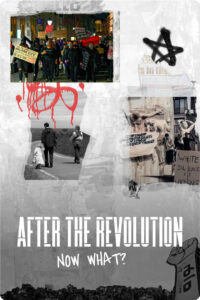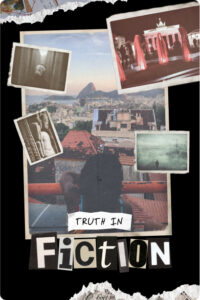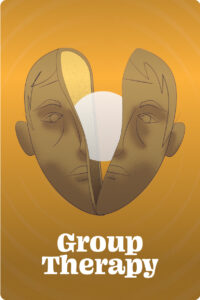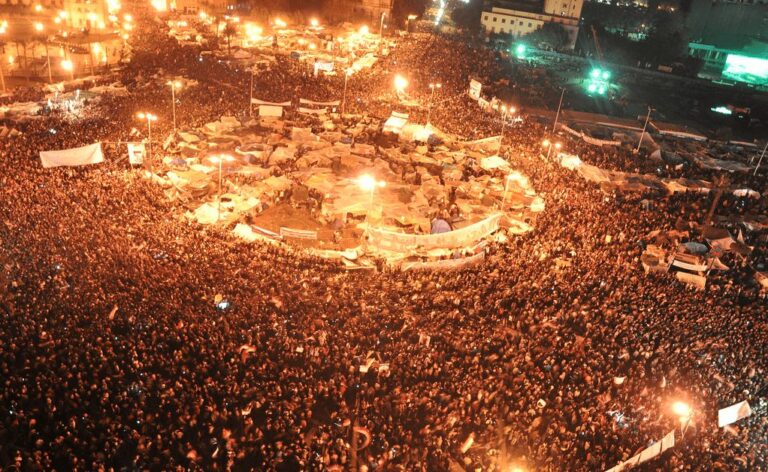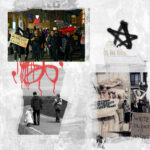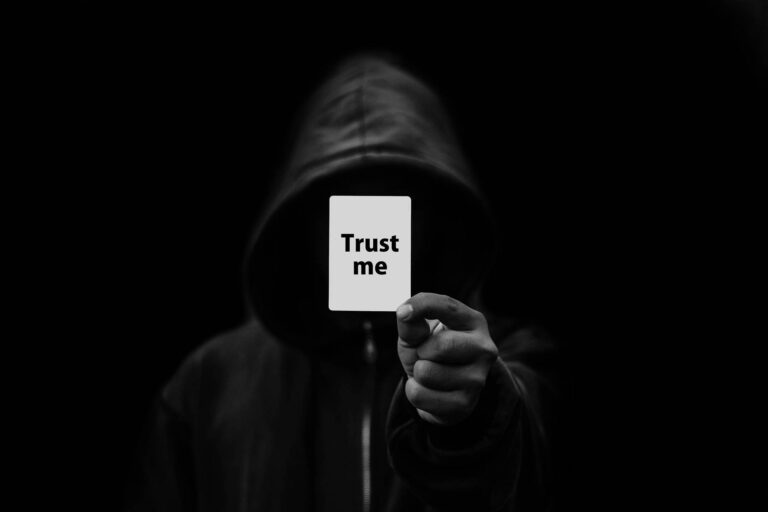So I go back,
writing about resistance and trouble,
about strife and struggle,
and laughter is still on my face.
Shakur (rapper)
It was incredibly complex to set an appointment with Kashef and talk about the events that shook Egypt a decade ago. His current life is scarred by their aftermath. In that sense, they are not mere history for him, something that one is over and done with. Just in January, some weeks ago, he carried out a hunger strike which lasted for eighteen days and nights. It was not intended as a public form of protest, but as a personal political act, barely communicated through his social networks, and in memory of those glorious days in 2011 when the Egyptians were toppling down the government in the largest Arab country, at the heart of the Middle East. He also suffers from PTSD. He has been followed, his mobile phone wired. He now lives in exile in Berlin. And very often, he can hardly sleep. So what Westerners call history is for him a mark on the skin, a sorrow of the soul. I needed to be patient about every appointment deferral, delays and other explanations; I understood this was already a way for him of getting in touch with his own experience and the lively force of his committed past.
Kashef was already politically active before the revolution started, as were many of his colleagues at the University of Alexandria, where he was studying law at the time. But he first felt the clashes between his generation and the Mubarak regime when Khaled Saïd was beaten to death by the Egyptian police on June 6, 2010. Saïd had been peacefully sitting at a cybercafé in Alexandria when two detectives from the close-by Sidi Gaber police station entered the place. Multiple witnesses, including the café owner, Hassan Mosbah, testified that the police agents did not even make an attempt to arrest Saïd. They battered him on site, hammering him against the marble tables. Following the owner’s complaints, they left the place dragging Saïd with them, only to continue their assault on him on the adjacent building. Saïd was brutally hit, his head banged against an iron door, his limbs defenselessly broken on the steps of a staircase. The agents then took him with them — probably not knowing that he was already dead — to the police station.
The “Arab Spring” ” seems ” to be in the West a fashionable tag to wrap up together dissimilar events in the Middle East that comprise massive mobilizations at their core
They later produced a medical statement that affirmed Saïd had died from swallowing a plastic bag that he was trying to hide, allegedly containing hashish. No mention was made of the concussions, the deformed skull, the broken limbs, the missing teeth. When Saïd’s family was summoned to recognize his corpse in the morgue, Saïd’s brother snapped pictures of him with his mobile phone. Later that June, the family released one clear photo onto the Internet. The NGO Human Rights Watch accompanied it with a report describing the state of the corpse and highlighting the obvious inconsistencies of the medical statement. That act sparked public outcry. An internet page that explained the events that led to his murder was dedicated to Saïd, the We are all Khaled Saïd — memorial, which attracted hundreds of thousands of followers followersand became one of the largest dissident sites of the time. On June 25, 2010, Mohamed ElBaradei — former head of the International Atomic Energy Agency — led a rally in Alexandria against the police abuse and visited Saïd’s family. Protests also sparked in Cairo’s Tahrir Square and in Egyptian embassies abroad. Thirty protesters in Tahrir Square were arrested. The State apparatus was being put to the test, and out of proportion repression was the response, as usual. The uproar was momentarily controlled, but the seed of dissent was planted. As for Kashef, this had all acquired a very personal meaning. Not only because the events were happening in his own city, but because Saïd had been a neighbor and a close friend.
Kashef was therefore very aware of the social unrest, maybe even suspecting the coming incidents. But the speed and scale it all took was unexpected, even for him and his colleagues. On December 17 that year, the next major event took place in another North African country: Tunisia. Mohamed Bouazizi, a street vendor, set himself on fire following the confiscation of his fruit cart and the harassment and humiliation inflicted on him, by a municipal official and her aides, in the small city of Sidi Bouzid. Bouazizi’s act, while impressive, was not as outraging as the response it received from the government. With 90% burns over his body, and in a comatose state, he was transferred to two hospitals before arriving to a third one in the capital, the Ben Arous Burn and Trauma Centre. To show his ” “respect”, ” and appease the public uproar, the then-president Zine El Abidine Ben Ali visited some days later Bouazizi — wholly unconscious at that time and covered in bandages from head to toes — and promised his government would intervene. A propagandist photograph of this official visit flooded the government-controlled media outlets. But Bouazizi died on January 4, 2011. Ben Ali’s government was then not only seen as corrupt and arrogant, but also as impotent and completely irrelevant. Anger started spreading on the streets. In order to prevent further contagion, Ben Ali’s government disbanded Bouazizi’s huge funeral procession in Sidi Bouzid, Bouazizi’s birth place. But videos from it went viral, igniting national unrest. The tide became unstoppable. Ben Ali was forced to step down on January 14, after 23 years of holding on to power.
Shortly after, actions of self-immolation were spreading to Egypt. On January 17, Abdou Abdel Hameed, a restaurant owner, went up in flames in downtown Cairo, after being denied bread coupons. The same day Mohammed Farouq Mohammed set himself on fire in front of the parliament, for an apparently unrelated family issue, while Ahmed Hashem Sayed, protesting the situation of unemployment, torched himself and died in Alexandria. The social mood was of indignation and strife; the political situation was at the edge. A ” national “Day of Revolt” ” was called for and set for January 25. No one could foresee the outcome of course, but tens of thousands arrived to the central Tahrir Square from the start. From then on, the protesters stayed, enduring eighteen days of hardship, clashes with pro-Mubarak hoards, curfews that could not be enforced, escalated violence against journalists and media teams, and all sorts of belligerent tactics. Nevertheless, the police had disbanded early on, and the military reportedly refused to follow orders to fire live ammunition over the crowds in the open squares, exercising some sort of self-restraint. Mubarak then offered concessions to the enraged multitude, he would not seek re-election, but the people had suffered too much to bargain now for the crumbs. Human Rights Watch reported 300 deaths after two weeks: the secret police had been targeting individuals ruthlessly. So there were no signs of appeasement. By the end of that period, on February 11, Hosni Mubarak finally resigned, after almost 30 years of presidency.
Kashef had arrived in Cairo on February 7, just as hundreds of thousands were flowing to the capital, probably expecting a final clash. He had been organizing part of the protesters’ tactics in Alexandria and he was bringing his recently acquired know-how to the epicenter. He was not only a witness, but an active agent who perceived the opportunity for a democratic uprising against years of dictatorship and corruption. Furthermore, the protesters’ actions were developing in different places at once, even if Tahrir Square became the nodal point of the revolution-in-progress. And to connect the narratives, different people became citizen journalists, broadcasting from their social networks. Over Facebook and Twitter, they posted materials uploaded to blogs and YouTube accounts. I wanted to go through many of these materials with Kashef, to sort out with him the visual quality of the events. Many of the videos from amateurs and spontaneous media teams had been collected into different archives. One of them is the 858.ma, which stores more than 1,600 video files from those days. But to outsiders, the different pieces start to resemble one another really quick, providing a form of visual redundancy curtailed by the technical means of the time. My aim was to decipher the patterns with him, to highlight the most memorable feats, to navigate a sea of images using the compass of his memory as a guide. He agreed, and we arranged a meeting to go over the materials together. But as soon as we started, his comments would overflow the description of any piece we watched. Somehow, we both noticed the dissonance. We then tried to concentrate on single events, following the archive’s architecture. But then he realized that many things were missing, that what he knew of actions taking place in one location would not be represented in the collection, that everything was centralized, taking Tahrir Square as the sole stage of what was for him a rhizomatic thread, like many streams flowing towards a dense river, but without which the river would be sterile and dry. Of course, this does not disqualify the noble intent of the archive — — to preserve a form of citizen-made visual history — — but it marks the limits of representation for someone that was present and active on the field where it all once took place.
In reality it was an attempt by the people to feel what they could accomplish together, where they rehearsed communicational tactics and political strategies on the field, and where a handful of Western-backed regimes were effectively confronted
But Kashef himself found a better way to reflect on the visuality of the events, one that would also allow another form of remembrance for him. He had recorded several videos himself, which were not on the 858 archive but supplemented many of the pieces collected there. With a single difference: in all his videos, the spectator lies at the center of the stage, attaining a privileged point of view where everything whirls around, as in orchestrated movements. We both saw how this happened especially in one video he took in Alexandria, at the beginning of the uprising. From his perspective, one stands over the crowd, since he was probably using a plant stand or a similar street setup to record the event. One then feels the packed streets behind, hears them screaming, tens of thousands marching towards this spot, where something is happening: two young man tear down Mubarak’s picture from a steel frame, set in front of Alexandria’s National Democratic Party headquarters, a few steps away from one of the cruelest police stations in the city. The video seems to command the action. One of the men turns at the camera, as if looking for approval, then thorns away another piece of the hideous portrait. And the crowds behind “us” yell, as if synchronized, raising their fists with each photo fragment taken away. Only then could I understand the deep influence Kashef was having on the crowd. In any case, the sound was overwhelming, and practically spilling over into our own conversation, so we were forced to mute it, leaving the image playing on a loop in the background.
We kept talking about the aftermath of the uprising, the video on the back looping again and again. He recalled the attempt of distraction that was made in the vote for a new constitution — ” “just before” ” or ” “right after” ” new elections. The video kept rehearsing its own choreography of lifted fists, some flags, many fingers marking a ” “V”. “He remembered the uncertainty of the days that followed, which were nevertheless joyful and optimistic. The young man tearing down Mubarak’s portrait yet again. Kashef vented his disappointment about ElBaradei, who had abandoned the opposition leadership and left the door open for a power grab by the Muslim Brotherhood. The crowd gathering in front of the portrait. The Muslim Brotherhood, through Mohamed Morsi, on power: inefficient and arrogant, nonetheless legal and legitimate. The crowds marching ahead, by the thousands. A new military coup in 2013 put an end to Morsi’s government: almost 1,000 assassinated on August 14 that year — one of the cruelest massacres of contemporary world history. Another piece of the portrait ragged down. Obama’s administration refused to call the event a coup: Egypt is the second largest receiver of military aid from the U.S., after Israel. Mubarak’s face being halved. New ” “elections” ” : the former Minister of Defense Abdel Fattah al-Sisi becomes Egypt’s sixth president. The fists in the air, all agitating at once, mesmerizing synchronicity. Was the Muslim Brotherhood really a threat? If they were indeed extremists, why would they try to stick to democratic procedures? The young man stared at the camera, as if hypnotized himself. A new militarized government was now in power.
We then paused the video for good. But the experience of looking at it in silence, and repeatedly, as the background to Kashef’s words, distilled some sort of appealing ease out of it, as if his statements had acquired a form of gravity, a definite ground.
Help us tell the world to you !
Frictions is launching its club : by supporting Frictions, you’ll be supporting a community of authors and journalists who tell the world through intimate stories!

In the meantime, our discussion was pushing forward. The revolutionary strain had spilled to Syria, where it did not turn out to be as effective against Bashar al-Assad’s regime. By 2013, a full-scale proxy war was ravaging the country, a situation that was complicated with Syria’s vicinity to Iraq. It was through this border that the leftovers of Saddam Hussein’s disbanded military were forming a new extremist militia: Daesh (Isis). Thousands of Syrians were fleeing the nation, and Kashef — now a lawyer — got involved in refugee aid and cases of political asylum. But he also engaged in writing reports, statements and political articles that were critical of al-Sisi’s government, which he knew was a risky affair. In order to be able to conduct his activities, he played with three completely different identities: a lawyer, a rapper and a researcher — this last one would go under his current alias: Muhammad al-Kashef.
But pressure from the regime was mounting. At one point, Kashef traveled to a conference on human rights in Sicily, Italy, and the next stage of the counter-revolution hit him there. The Egyptian government decoded the unity of his three different personas, and he got the hint from an insider that, upon coming back, he would be arrested. This was mid 2017 already. Kashef knew that the threat was plausible. To confirm his growing suspicion, Khaled Ali, a former presidential candidate who was in Italy at the same time and was known for his advocacy for government reform and activism against widespread regime corruption, was taken prisoner as his plane landed back in Cairo. Kashef decided to stay abroad. He now himself had to follow the protocol he usually delineated for others, in order to stay sane and try to build up a structured plan. He flew out of Italy to Tiflis, in Georgia, one of the few places to which he could apply for an electronic visa. He could then contact his support network for the next steps. In the end, he was granted a short-term Schengen entry with which he travelled through Central Europe and which he was able later to turn into a longer permit. As he was going through this ordeal, he was forwarded abundant evidence on how the police was looking for him back in Cairo.

Kashef was ultimately admitted to Germany and now works as a freelance consultant and researcher. When I talked to him about meeting for a conversation, I told him I wanted to know his opinion on the Arab Spring. ” “It was not a spring — he cut me short — it had nothing to do with the image of a seasonal event. It was a revolution, an uprising. But the revolution didn’t finish then. It is an ongoing event. We just put another stone on the road, for the generations to come. This has cost me dear, I am not allowed to go back to my country, and the life in exile is harsh. But I don’t regret a thing. I would go through it all again if I needed to. Our only legacy will be to leave this for the next generation, and see what they can do with it. ” We are all still processing all this.” I understood from the clarity of his testimony that what we all saw from the uprisings one decade ago was a mediatized event, which some thought was prompted by the tech networks. The “Arab Spring” ” seems ” to be in the West a fashionable tag to wrap up together dissimilar events in the Middle East that comprise massive mobilizations at their core. In reality it was an attempt by the people to feel what they could accomplish together, where they rehearsed communicational tactics and political strategies on the field, and where a handful of Western-backed regimes were effectively confronted. It was chaotic in many ways, but chaos in itself bears a special kind of force, one that needs to be understood, shaped and turned into a source for future attempts. So in the end, the uprisings probably really became a spring,” spring “only not in the sense of a year’s season, but as the place where a river is born, the seemingly trifling stream that flows out from the ground, an origin, maybe the origin of a new time to come.
With many thanks to Kashef and Sanaz.
© photo : J. Rashad

